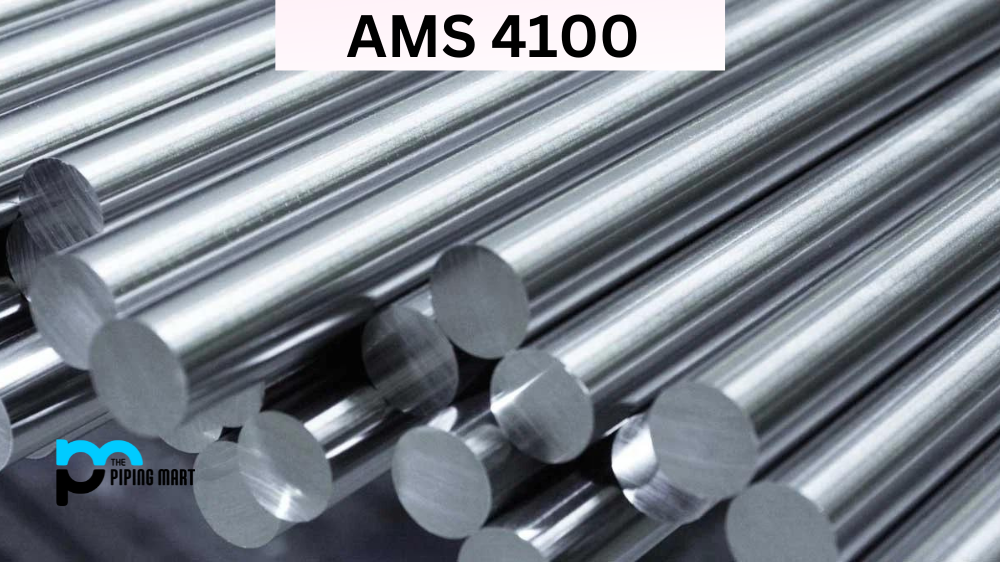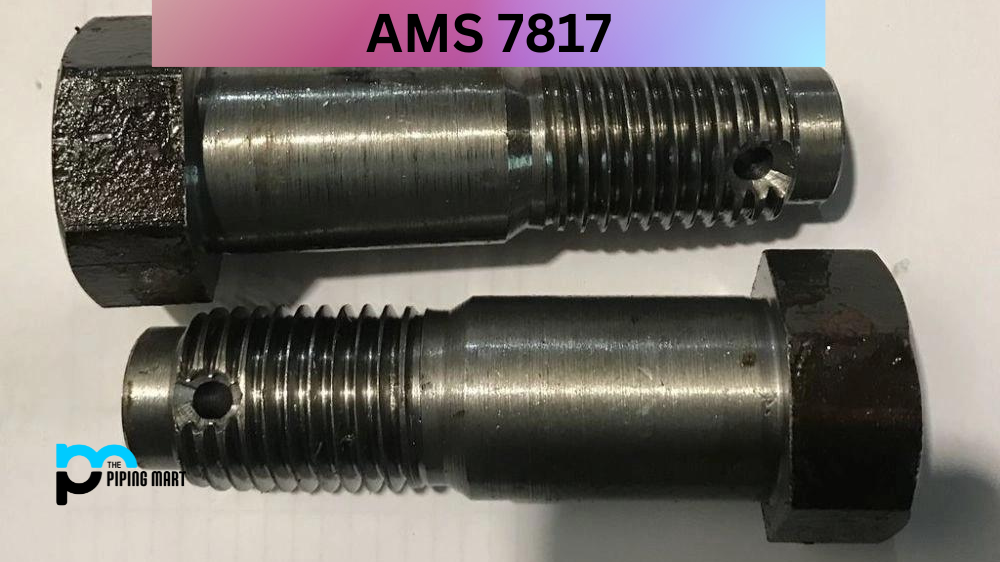Have you heard about AMS5702 and are curious to know more about it? AMS 5702 is a popular alloy used in various industries for its impressive properties. This blog post will dive deeper into what AMS 5702 comprises, its physical and mechanical properties, hardness, and potential uses. We will also touch on heat treatment and how it affects this versatile alloy.
What is AMS 5702?
AMS 5702 (also known as Inconel 706 Alloy) is a high-strength, corrosion-resistant alloy commonly used in aerospace applications. It is known for its exceptional durability, toughness, and fatigue resistance. It is ideal for engine shafts, landing gear, and other parts under extreme stress. This specialized alloy is carefully crafted to meet strict specifications, ensuring it can withstand even the harshest environments and maintain its performance over time. With its unique properties and reliable performance, it’s no wonder that AMS5702 is a top choice for engineers and manufacturers in the aerospace industry.
AMS 5702 Composition
AMS 5702 is a nickel-chromium-molybdenum alloy with a specific grain size requirement and corrosion resistance. The composition comprises 49% nickel, 20% chromium, and 17% molybdenum. This alloy is known to have high oxidation resistance and can withstand high temperatures. The nickel component in AMS 5702 enhances its strength, while the chromium component increases its corrosion resistance.
| Elements | Content (%) |
|---|---|
| Nickel, Ni | 39-44 |
| Iron, Fe | 38 |
| Chromium, Cr | 14.5-17.5 |
| Niobium, Nb | 2.50-3.30 |
| Cobalt, Co | ≤ 1 |
| Titanium, Ti | ≤ 0.40 |
| Copper, Cu | ≤ 0.35 |
| Manganese, Mn | ≤ 0.35 |
| Silicon, Si | ≤ 0.35 |
| Carbon, C | ≤ 0.30 |
| Aluminum, Al | ≤ 0.060 |
| Phosphorous, P | ≤ 0.020 |
| Sulfur, S | ≤ 0.015 |
| Boron, B | ≤ 0.0060 |
AMS 5702 Physical Properties
AMS 5702 has excellent physical properties, including outstanding corrosion resistance, high-temperature strength and flexibility, and high thermal conductivity. It also has low thermal expansion and good creep resistance. With a specific gravity of 8.19, this alloy has a melting point of 1330-1385°C and a density of 8.19 g/cm³. Its modulus of elasticity is 210 GPa.
| Properties | Metric | Imperial |
|---|---|---|
| Density | 8.05 g/cm³ | 0.291 lb/in³ |
| Melting point | 1360°C | 2480°F |
AMS 5702 Mechanical Properties
AMS 5702 exhibits impressive mechanical properties that make it popular in various industries. It has a minimum tensile strength of 1030 MPa and a minimum yield strength of 760 MPa. This alloy also has good fatigue resistance, which means it can withstand repeated loading. It is essential to note that mechanical properties may vary depending on the heat treatment used.
| Properties | Metric | Imperial |
|---|---|---|
| Tensile strength | 757 MPa | 109800 psi |
| Yield strength (at strain 0.200%) | 383 MPa | 55500 psi |
| Poisson’s ratio (precipitation hardened, calculated by mfr) | 0.382 | 0.382 |
| Modulus of elasticity (precipitation hardened, dynamic method) | 210 GPa | 30500 ksi |
| Elongation at break | 47% | 47% |
AMS 5702 Equivalent
- AMS 5605
- AMS 5606
- AMS 5701
- AMS 5702
- AMS 5703
AMS 5702 Thermal Properties
| Properties | Metric | Imperial |
|---|---|---|
| Thermal expansion co-efficient (at 24-100°C/75.2-212°F) | 13.46 µm/m°C | 7.478 µin/in°F |
| Thermal conductivity | 12.5 W/mK | 86.8 BTU in/hr.ft².°F |
AMS 5702 Uses
AMS 5702 is widely used in various industries, such as aerospace, power generation, and chemical processing. The alloy’s excellent high-temperature strength and corrosion resistance make it ideal for gas turbines, heat exchangers, exhaust systems, and furnace parts. It is also used in manufacturing furnace muffles, heater tubes in ethylene pyrolysis, and aerospace engine components.
AMS 5702 Hardness
AMS 5702 has a hardness ranging between Brinell 230 and Rockwell C 24. Hardness is essential when selecting materials for specific applications. This alloy’s high hardness makes it ideal for large components that require wear resistance and protection against distress. Depending on the application, different heat treatment methods can result in varying hardness levels.
AMS 5702 Heat Treatment
Heat treatment is essential when working with AMS 5702, and the process determines the material’s final hardness and strength. The two most common heat treatment methods are solution annealing and age hardening. Solution annealing involves heating the alloy to a specific temperature and rapid cooling to achieve a specific grain size. Age hardening involves re-heating the alloy and keeping it there to improve its hardness.
Conclusion:
AMS 5702 material is a versatile alloy with impressive properties that make it popular in various industries. Its composition, physical and mechanical properties make it ideal for various applications from aerospace to chemical processing. The alloy’s hardness is another essential factor to consider, and users can employ heat treatment methods such as solution annealing and ageing hardening to achieve their desired hardness level. Hopefully, this informative blog post has given you a better understanding of what AMS 5702 is and how it can be used.

Abhishek is a seasoned blogger and industry expert, sharing his insights and knowledge on various topics. With his research, Abhishek offers valuable insights and tips for professionals and enthusiasts. Follow him for expert advice on the latest trends and developments in the metal industry.




